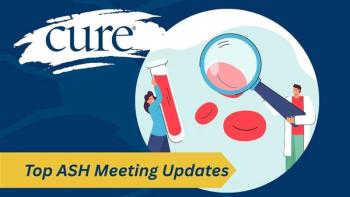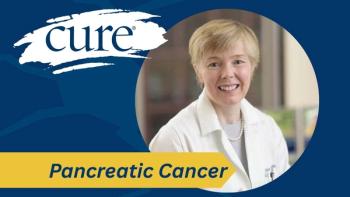
- Fall 2013
- Volume 12
- Issue 3
Crisis Control: How to Effectively Prevent Side Effects
Certain side effects of chemotherapy can be prevented.
Once Shirley Billigmeier got past the initial shock of receiving a breast cancer diagnosis in 2009, at age 59, she began researching all she could about treatment options. Her stage 1 cancer was caught early, but an aggressive cell type meant Billigmeier’s lumpectomy would need to be followed by chemotherapy to lower her chance of recurrence.
Learning that one of her chemotherapy drugs, docetaxel, would almost certainly cause hair loss, Billigmeier’s heart sank. She ordered a wig but kept on researching—learning from her dermatologist that a cold cap might stop her from shedding her locks. Using cold caps requires careful coordination during chemotherapy treatments, and because they are not yet approved by the Food and Drug Administration, many medical professionals are skeptical of their promise.
“I had to keep them on dry ice since the cap has to be minus 30 degrees Celsius,” explains Billigmeier, now 63 and cancer-free. “But I said, ‘I’m going to do this. I don’t have to lose my hair.’ In my mind, I had no doubts it would work.”
Hair loss is only one of many potential downsides of chemotherapy, which is increasingly effective in many malignancies but also associated with short- and long-term side effects, including fatigue, nausea, low blood cell counts and potential nerve injury. But patients have options to counter certain side effects of chemotherapy.
The goal of chemotherapy is to destroy cancer cells. But the way it works—by killing rapidly growing and dividing cells—is why it causes unwanted side effects. As it attacks those fast-growing cancer cells, it also kills off quickly growing healthy cells in areas, such as in hair roots, bone marrow, and cells lining the mouth, esophagus, stomach and intestines. This causes well-known issues, including hair loss, nausea, vomiting, fatigue, low blood cell counts and mouth sores.
And while certain medications produce particular side effects (for instance, platinum- and taxane-based chemotherapies can trigger nerve damage), determining who will suffer specific effects and for how long is an inexact science.
“What people don’t always realize is they’re not necessarily going to immediately feel better when they’re done with treatment,” says Dawn Hershman, an associate professor of medicine and epidemiology at Herbert Irving Comprehensive Cancer Center at Columbia University in New York. “And that results in a lot of psychological distress.”
What people don’t always realize is they’re not necessarily going to immediately feel better when they’re done with treatment. And that results in a lot of psychological distress.
But doctors can often make a well-informed guess about who might be more at risk for specific chemotherapy side effects, says Michael Fisch, chairman of the department of general oncology at MD Anderson Cancer Center in Houston. Comparing patients to hikers approaching the edge of a side-effect cliff, he says “different patients are closer to the edge to start with,” and whether a patient ends up experiencing a chemotherapy side effect “is very complicated.”
“If you already have diabetes, for example, it won’t take much of a nudge to cross the line to peripheral neuropathy,” he says of the nerve damage that results in pain and tingling and is a pre-existing condition in many older people with diabetes. “People with more cardiac risk factors may be more at risk for cardiac toxicity from certain types of chemotherapy.”
Fisch explains that the degree to which an individual experiences some side effects will depend not only on the nature of the person but on the nature of the drug. “In other words, it depends on how strong the nudge is and how resilient you are to the nudge and also how close you are to the side-effect cliff.”
People with more cardiac risk factors may be more at risk for cardiac toxicity from certain types of chemotherapy.
Some side effects of chemotherapy, such as nausea and vomiting, are readily preventable thanks to drug advancements. As cancer treatments improve in effectiveness, so, too, do medications and techniques to prevent or minimize some of the most-feared chemotherapy side effects.
So what can patients do to prevent certain side effects of chemotherapy? Some preventive methods are backed by dozens of research studies, while experts caution that others are more hit-or-miss and untested.
Ice chips for mouth sores
As many as 40 percent of patients receiving chemotherapy experience mouth sores or oral mucositis, according to Cancer.Net. But these painful sores, which can extend down the throat, are not only a nuisance—they can deter patients from eating and drinking, thereby affecting nutrition and energy levels.
But a simple measure might prevent mouth sores in some patients. A 2012 study in Iran of 80 patients indicated that those who placed ice or ice-cold water in their mouths from five minutes before starting to five minutes after completing a chemotherapy treatment had a 32.5 percent lower incidence of oral mucositis than those who had nothing in their mouths. The intense cold is thought to temporarily narrow blood vessels in the mouth, a process called vasoconstriction, which diminishes blood supply, thereby reducing chemotherapy exposure for these cells. Additional research is needed, however.
Cold caps for hair loss and cold gloves for nail loss
Using the same tenets of vasoconstriction, deeply cooling the scalp or hands during chemotherapy can ward off hair or nail loss by temporarily hindering blood flow to those areas. While both methods are still being researched in the U.S., several European studies have shown some benefits.
Billigmeier’s success with cold caps prompted her to co-found a nonprofit, The Rapunzel Project, to create awareness about cold caps and to help supply the specialized freezers they require to medical facilities. “Whether other patients use the cold caps or not isn’t the issue,” she says. “We just wanted to make sure they were aware that [the cold cap] existed and could choose it or not.”
A 2005 review of 53 studies on scalp cooling, published in the Annals of Oncology, for example, showed that the success rates of patients keeping their hair varied greatly, but “cooling time, the chemotherapy used and the temperature seem to be influential,” according to the authors.
While less prevalent than chemotherapy-associated hair loss, nail changes were the focus of a 2005 study that tested a so-called frozen glove on patients receiving docetaxel. Participants wore the glove on one hand and nothing on the other. According to the findings, 89 percent of the gloved hands had no nail toxicities compared with 49 percent in the non-gloved hands.
Cymbalta (duloxetine) or glutamine for neuropathy
One of the most difficult chemotherapy side effects is peripheral neuropathy, a form of nerve damage that can range from mild to severe—from tingling in the hands and feet to electric shock-like pain. Such effects can hinder balance and activities of daily living, such as buttoning a shirt. Neuropathy is usually temporary but can be long-lasting in some patients. In a phase 3 clinical trial published this year in the Journal of the American Medical Association, patients who took the antidepressant Cymbalta (duloxetine) reported a decrease in any amount of neuropathic pain compared with those given a placebo—59 percent versus 38 percent.
Meanwhile, the amino acid glutamine has variably been shown to provide a protective effect on nerves. A small 2005 study of 46 patients treated with paclitaxel showed that those who took glutamine developed significantly less weakness, loss of “vibratory sensation” and toe numbness than those who did not take glutamine, but larger studies are needed to confirm this.
G-CSFs for low blood cell counts
Neutropenia, extremely low levels of neutrophils (a certain type of white blood cell), is a common result of most chemotherapy regimens. But plunging blood cell counts and the duration of this low point—which invite life-threatening infections—can be as dangerous as cancer itself. Fever, which can sometimes be the only sign of infection, along with low neutrophil counts, is called febrile neutropenia.
Blood-forming molecules called granulocyte-colony stimulating factors (G-CSFs) can stimulate white blood cell proliferation, despite chemotherapy’s toxic effects. In a 2007 review of published randomized trials printed in the Journal of Clinical Oncology, researchers reported a 46 percent lower relative risk of febrile neutropenia in patients receiving G-CSFs compared with control patients.
Additionally, cutting the risk of neutropenia also lowers the chances of chemotherapy dose reductions or delays. In the past, patients required daily injections of a growth factor for several days after each dose of chemotherapy, but a long-acting preparation is now also available for use as a single injection per cycle of certain chemotherapy regimens.
Articles in this issue
about 12 years ago
Lung Cancer Video Touches on Emotions and Supportabout 12 years ago
Triple-Negative Breast Cancer: Divide and Conquerabout 12 years ago
Future Frontier: Fighting Cancer at the Genetic Levelabout 12 years ago
Second Chance: When Grandparents Become the Caregiversabout 12 years ago
Supreme Court Votes Against Human Gene Patentsabout 12 years ago
Documentary About Cancer Plannedabout 12 years ago
Critical Mass Annual Conferenceabout 12 years ago
Superfoods Study Keeps More Men on Active Surveillanceabout 12 years ago
HPV Infections Plummet with Vaccine




